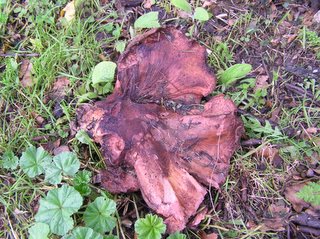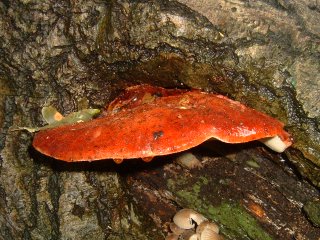Cauliflower Fungus (Sparassis crispa)
Whoever heard of a cauliflower fungus? Well, there is one and it is a major cause of windthrow of pines. The name comes from the convoluted shape of the fruitbody - but maybe 'coral fungus' would be a better description.
This pathogen enters tree roots via wounds and grows up the root system towards the trunk. It can decay the base or lower trunk but the main damage occurs in the root system, where it is very difficult to quantify. Because of this it is a dangerous fungus and difficult to tolerate on trees near to people or structures.
On a recent case I checked for decay at the base on the assumption that the fungus would only affect this wood if it was well established in the root system, and therefore, likely to be affecting stability. I thought if there was no basal damage we could then use an air spade to expose the roots around the fruitbody with the hope that we could clearly distinguish between weakened and unaffected roots.
We found decay beginning in the base and the tree is being carefully monitored until it can be removed safely.
The fungus is usually around 30cm in diameter and found close to the base of the tree. It is annual and grows through the summer. It is edible but usually nibbled by squirrels rather than humans. In autumn the cold weather causes it to become slimy and dissolve.
Labels: cauliflower fungus, pine tree, root rot, Sparassis














